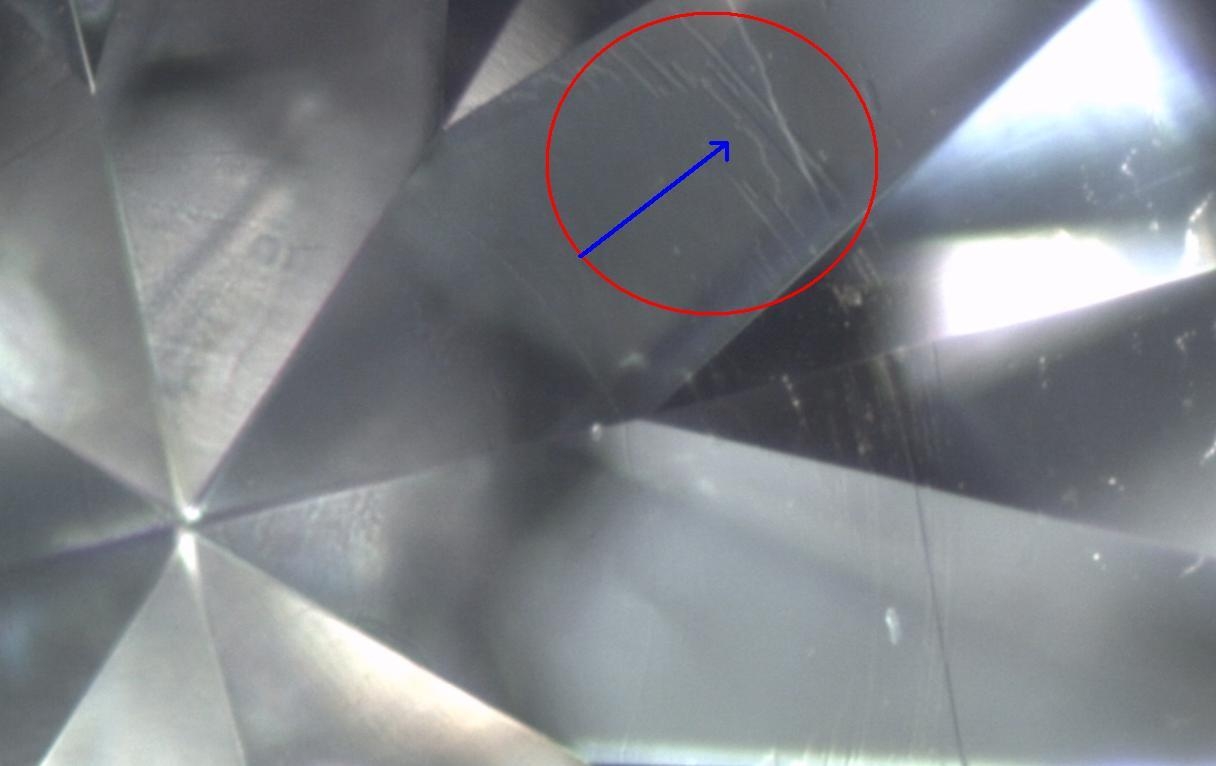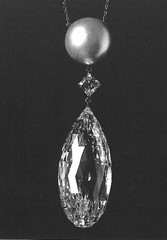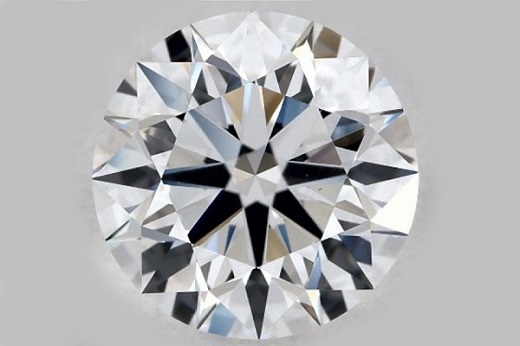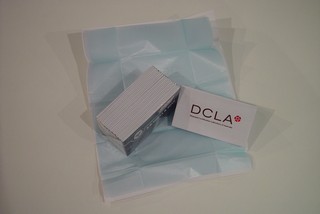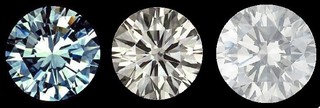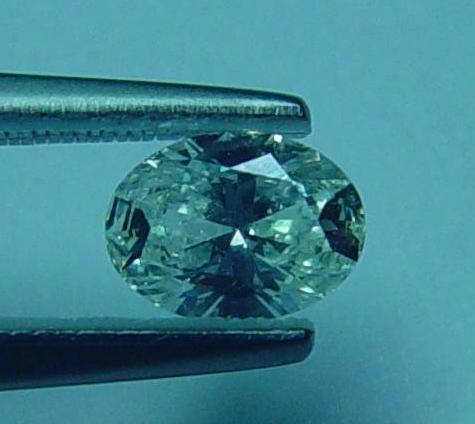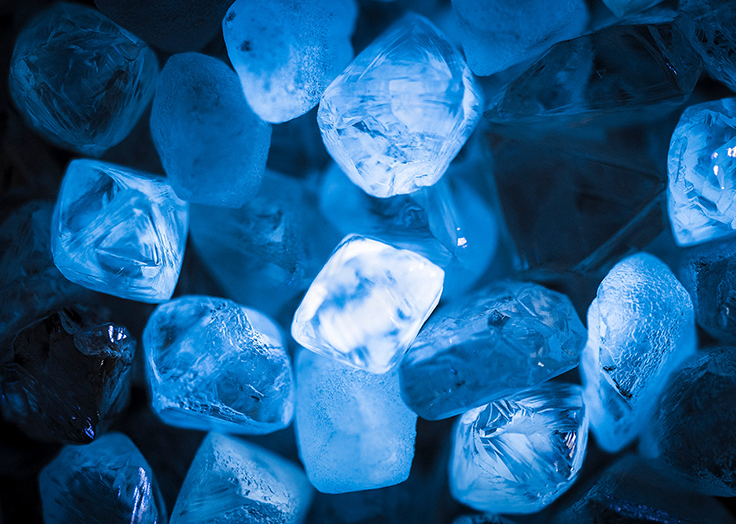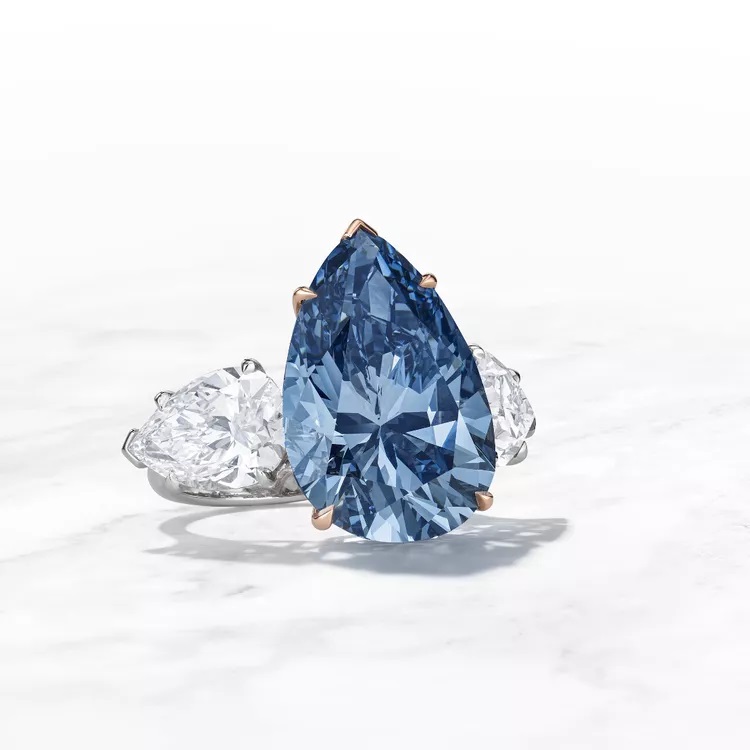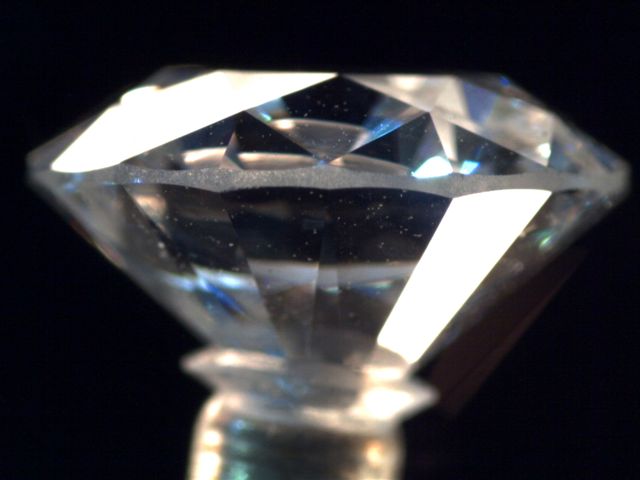A blue diamond is one of the rarest and most sought-after types of coloured diamonds, known for its stunning blue hue. The unique colour of these diamonds is caused by the presence of the element boron in their crystal structure, which absorbs light in the yellow and red parts of the spectrum and allows the blue light to be reflected, giving the diamond its distinctive colour.
Key Characteristics of Blue Diamonds:
Colour:
The blue colour of these diamonds can range from pale blue to vivid blue, with the most highly prized stones being those that exhibit a deep, intense blue hue.
The colour is caused by boron impurities, which are present in trace amounts during the diamond’s formation. The boron atoms affect how light is absorbed and reflected, giving the diamond its blue appearance.
Grading:
Blue diamonds are graded based on their colour intensity and the absence of undesirable secondary hues, such as gray or green. The Gemological Institute of America (GIA) uses a grading scale for blue diamonds, ranging from faint blue to fancy vivid blue.
The more intense the blue colour and the less presence of secondary hues, the more valuable the blue diamond. “Fancy blue” is used to describe diamonds that exhibit strong to vivid blue colours, while those with a duller blue shade might be graded as fancy light blue.
Rarity and Value:
Blue diamonds are incredibly rare, and their value can be significantly higher than that of white diamonds due to their scarcity. The rarity is partly because the element boron is rare in nature and is only present in certain regions where diamonds are formed.
Blue diamonds also often exhibit greater brilliance due to the way they absorb and reflect light, making them highly prized in the luxury jewellery market.
Famous Blue Diamonds:
Some of the most famous blue diamonds in the world include:
The Hope Diamond: A historic blue diamond weighing 45.52 carats, known for its rich blue colour and dramatic history.
The Blue Moon Diamond: A 12.03-carat fancy vivid blue diamond, which set a record when it was sold at auction in 2015.
The Winston Blue Diamond: A 13.22-carat blue diamond, one of the most significant diamonds in the world.
The Ocean Blue Diamond: A vivid blue diamond sold for a substantial sum due to its intense colour.
Clarity:
While clarity (the absence of internal imperfections) is a significant factor in the value of any diamond, blue diamonds tend to have a lower emphasis on clarity when compared to the overall colour and rarity. Many blue diamonds may have minor inclusions or blemishes, but the overall intensity of colour often takes precedence.
However, higher-quality blue diamonds with fewer inclusions can still fetch higher prices, especially if they exhibit exceptional clarity alongside their stunning colour.
Treatments:
Some diamonds are artificially treated to enhance their blue colour, often using high-temperature or high-pressure treatments. These treated diamonds are generally more affordable than naturally occurring blue diamonds but are less valuable.
Natural blue diamonds are much rarer and more valuable because they acquire their colour naturally over millions of years of formation under specific geological conditions.
Investment and Collectability:
Due to their rarity and desirability, blue diamonds are often seen as a good investment. Their value can appreciate over time, especially those that have strong provenance or exceptional characteristics.
Collectors often seek blue diamonds due to their exclusivity, and they are often featured in high-profile jewellery auctions and collections.
Famous Mining Locations:
The most famous source of blue diamonds is the Argyle Mine in Australia, which produced some of the world’s most well-known blue diamonds before its closure in 2020. The Argyle mine was also the source of other rare coloured diamonds, such as pink and red diamonds.
South Africa, India, and Botswana are other notable sources of blue diamonds, though the supply of these stones is limited.
Cultural Significance:
Historically, blue diamonds have been associated with royalty, luxury, and status. Their rarity and captivating colour have made them highly coveted, with famous blue diamonds often passed down through royal families or sold at prestigious auctions.
In modern times, blue diamonds continue to be a symbol of elegance and refinement, often sought after by collectors and those looking for a distinctive and luxurious gem.
